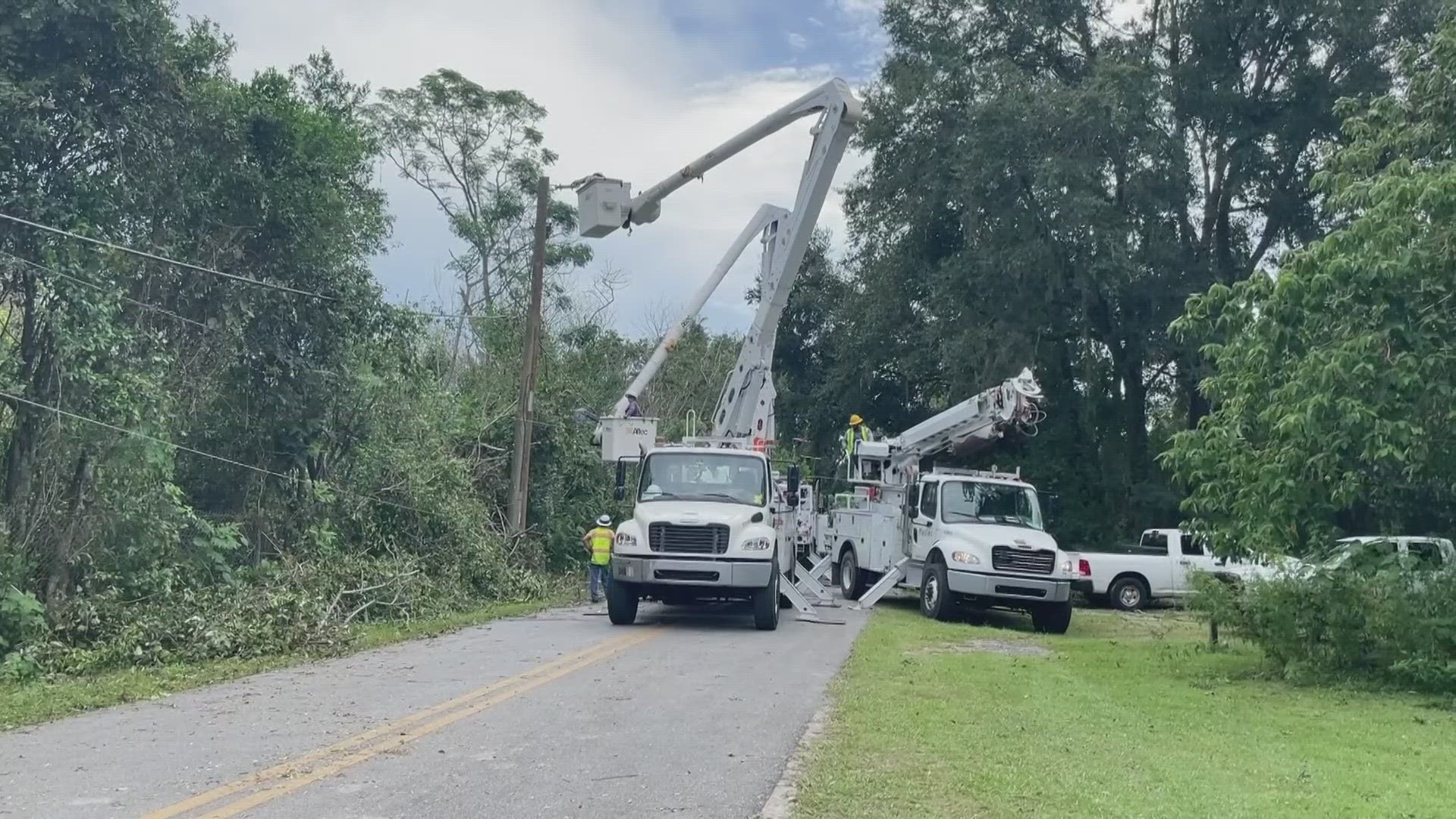LAKE CITY, Fla — While no one likes to be without power after a hurricane hits, electricity was restored within days after Idalia. That's different from 20 years ago, when power was out in some Florida locales for weeks after a hurricane strike.
After Hurricane Idalia swept through Columbia County, power trucks swept through right behind.
At one point 88% of the county was without power, and people felt it.
Last Thursday, after losing power for two days, Anzarria Jerkins of Lake City said, "It's hot, hot, hot!"
For the most part, power was restored -- even to the hard hit areas such as Columbia, Suwanee, and Levy Counties – within days.
That's a big change compared to 20 years ago, when hurricanes hit the Sunshine State.
For example, Hurricane Charley in 2004 knocked out power for two weeks in parts of southwest Florida.
So what’s happened in two decades?
"We've invested a lot of money in poles and wires over the last 20 years," Florida Power and Light CEOO Amrando Pimentel told First Coast News in a one-on-one interview. He said electric companies have learned the hard way to harden the system.
As an example, he said, "If you’ve got two poles that are 150 feet apart. One of the better ways to harden the system is to put a pole right in the middle. So now the poles aren’t swaying as much. The lines aren’t swaying as much."
Pimentel also said better technology has also helped restore power faster. He referenced something called an automatic feeder switch. "What they’ll do is if a branch hits the line, the breaker will open so power will stop going through the line. It will try to reset. It will close again. And if the branch is cleared, boom! You’ve got power. That type of technology saved roughly 50,000 outages this storm for us."
And that power came back on in homes, without power crews having to come out at all.
Granted, "not every storm is going to be the same," Pimentel said.
Population density may also play a role in the speed of restoration. If there are more customers where a storm hits, there is more power to restore. Southwest Florida had more people living there 20 years ago, compared to north central Florida now.
Still, with the increasing frequency of strong storms, companies such as FPL have had to learn to become more resilient.
"A lot of folks will lose power in a big storm like this. The key is how fast can you get customers back up," Pimentel said.

